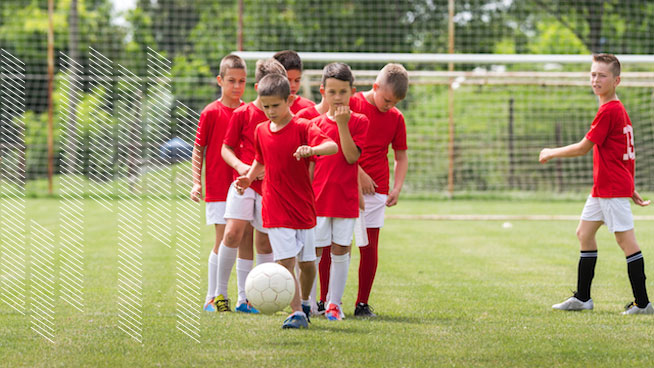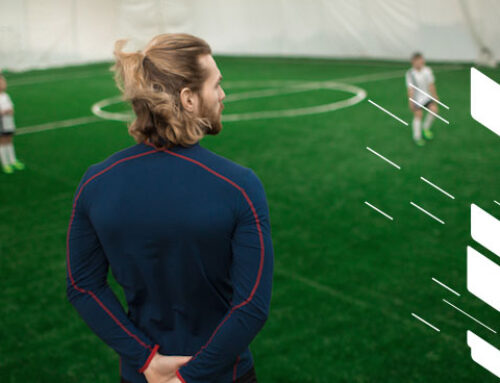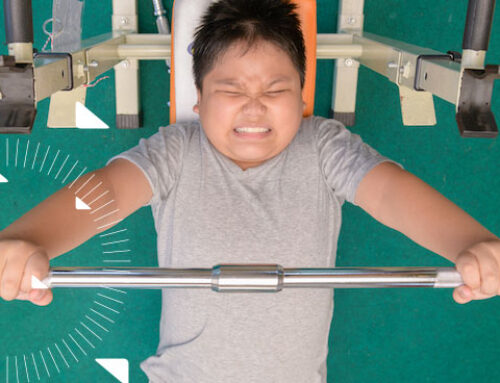By John Cissik
Practice is where athletes learn how to play the game. It’s where teams learn to work together, form an identity and develop a strategy. Practice is also the best place for coaches to coach—if a coach has to coach fundamentals during a game, there’s a big problem.
Having said that, many practices are set up for the athlete to fail. All too often, practices see the athlete spending too much time standing around and watching instead of actually working and getting better. In fact, a 2017 study published in the Journal of Sports Sciences found that children only spend about 30 percent of their organized sport practice time engaged in moderate-to-vigorous exercise.
If the athlete isn’t getting in the reps that are critical to skill development, they’re not going to be engaged. If they’re not engaged, they’re going to be bored. So not only does poor practice organization result in players who are less fit and less skilled, but it can also significantly decrease their interest in the sport.
To help organize successful practice, coaches should focus on three overriding themes:
- The practice has to have purpose.
- The practice has to be structured.
- The practice needs to have energy.
1. Practice With Purpose
Whether you are coaching 5-year-olds or college-level athletes, you need to have a purpose for each practice. We never intend to just go through the motions at practice. Also realize that no matter at what level you coach, you’re going to feel like there’s never enough time to do everything you want. That means that the purpose for each practice will have to be focused and centered.
For example, I’m in the middle of coaching basketball at the time of this writing. My first practice had three purposes: instill our culture, determine where the players are in terms of skill level, and focus on speed.
The first practice is important for instilling culture, establishing the coach’s expectations, and dictating a team identity. In addition, we have to evaluate where players are skill-wise relative to where they were last season. This means that our focus is going to be on skill-centric drills focused around dribbling, lay-ups, shooting, and passing. Finally, I want my teams to play fast and get other teams tired and on their heels. This means fast breaks, fast shooting drills and training to play defense despite the fatigue/scenarios that can arise when playing fast.
It’s just one practice, but that practice had a purpose. When you bring a purpose to your practice, you bring an urgency you wouldn’t otherwise have. You’re not going to be standing around in the middle of practice wondering what to work on next, forcing your kids to do the same. Having a purpose will naturally allow you to create a plan built to serve that purpose, which leads us to my next point.
2. Structure Your Practice
Practices need to be structured so athletes can be successful and coaches can teach the game. Below are some important keys for structuring a successful practice:
- Don’t neglect the warm-up.
- Organize by importance.
- Use time efficiently.
- Communicate with the players.
A proper warm-up prepares the body for exercise, helps to prevent injuries, gets the athlete mentally engaged and increases focus and intensity. Those are the obvious benefits, but a team warm-up also serves as a great opportunity for several other things.
First, it’s a good time to develop team spirit and instill values. We do the warm-up together as a team. These involve exercises done military style (so we count and perform them together). Coaches do the exercises along with the athletes. This helps to reinforce the fact that we are a team.
Second, it lets you work on fundamental skills. For example, after my baseball team has done the team warm-up, we may split up and let positions start to warm-up for their specific skills. Pitchers have a throwing progression that they go through; position players have a fielding/catching progression; etc. This lets us address rudimentary skills at gradually increasing speeds before we go live.
Finally, a team warm-up gives the coach a great opportunity to get everyone on the same page. I’ll talk about communication in a minute, but immediately following the warm-up is the perfect place to inform your team of the day’s plan, what the focus is, and the logic behind that focus.
Organizing your practices in order of importance and using time efficiently go hand-in-hand.

You’re never going to feel like there’s enough time. This means you have to organize your practices to get the most out of every minute that is available to you and your players. Part of this is making sure you don’t save what you deem to be the most important part of practice for the end, because it’s very likely that portion of practice will be cut short due to time restrictions. Prioritize the things you want to work on most by placing them earlier in your practice plans as oppose to later.
Then when it comes to using time efficiently, you want to stay away from drills that have 10 kids standing around and waiting while one kid takes a rep. Best-case scenario, a kid will spend less than 10% of that drill time actually taking reps. Does that sound efficient? Of course not. It can also create a scenario where it’s more difficult to offer good coaching, because there’s the pressure to get all the other kids through the line and not spend too much time with one athlete. If you can figure out ways for the kids to perform the drill in smaller groups or even pairs, they’re going to get more reps.
One way I aim to keep more players engaged simultaneously is by striving to have players work on offense and defense at the same time, particularly with my baseball and basketball teams. This maximizes our efficiency and minimizes my athletes standing around.
In baseball, for example, we work on base running and controlling the opposing run game simultaneously. So with base running, we practice getting our leads, reading the pitcher and the angle of the pitch, and taking advantage of mistakes. But at the same time, our pitchers and fielders are practicing pick off moves and attempting to control the opposing run game.
In basketball, it could take the form of running 2-on-2 or 3-on-3 drills where one side has an offensive task and the opposing side has a defensive task.
Finally, communication should always play a role in your practice structure.
Athletes need to understand what the practice will focus on and why. Not only does this increase trust and buy-in, but it helps the coaches be accountable to their plan. I take a few minutes at the beginning and end of each practice to talk to my athletes. This is not a lecture. It’s basically something along the lines of, “Do you all remember what happened in the last game? We did a great job at x and y, but we made some mistakes when z happened. Today we’re going to continue being great at x and y, but we’re going to start off working on z so that becomes a strength for us!” When players understand why they’re doing what they’re doing, they’re more likely to be engaged and energetic in practice. Then at the end of practice, I review what we worked on, why it’s important, and how we did at practice.
3. Practice With energy
Practices will be most engaging and therefore most effective if they’re carried out with high energy.
The most important thing to remember is that the coach dictates the energy. If the coach is excited and prepared, the athletes will pick up on that and follow their lead. But if the coach doesn’t want to be there and/or is not prepared, the athletes will also pick up on that.
Second, there needs to be a lot of talk. Athletes should be talking to each other constantly. During basketball practice, just like in games, I expect my athletes to be loud and communicative. You can hear my athletes yelling “Shot!” when the ball is in the air or yelling for a pass when they’re open outside a teammate’s sight line. Constant communication during practice creates a game-like environment and helps engrain good habits for competition.
Third, practice needs to be competitive. If athletes don’t learn how to compete in practice, they will not suddenly turn it on in a game. Building more competition into practice is going to provide more game-like reps and better prepare players for competition. Can you time a drill and have players strive to beat one another? Can you find a way for athletes at a specific position to compete with each other? For example, who can field the most ground balls in a row, or who can sink the most consecutive free throws?
Scrimmaging and small-sided games should also make up a significant amount of practice time, particularly for childhood and pre-teen athletes. This type of work allows them to naturally experience and embrace competition and gets many players involved and moving simultaneously. Coaches can tweak rules and boundaries of the games in an effort to drill certain skills (such as each basketball team must make three passes before taking a shot, or creating a much smaller field for soccer players to compete on so they’re forced to practice dribbling in tight areas). Coaches can also stop play occasionally to go over what a player did right or wrong in a situation that organically arose during the game.
Practice is a crucial part of sports. If you as a coach can bring purpose, structure and energy to each and every practice, your athletes and your team will be in position to get a lot out of it.
Photo Credit: fotokostic/iStock
READ MORE:







Leave A Comment
You must be logged in to post a comment.